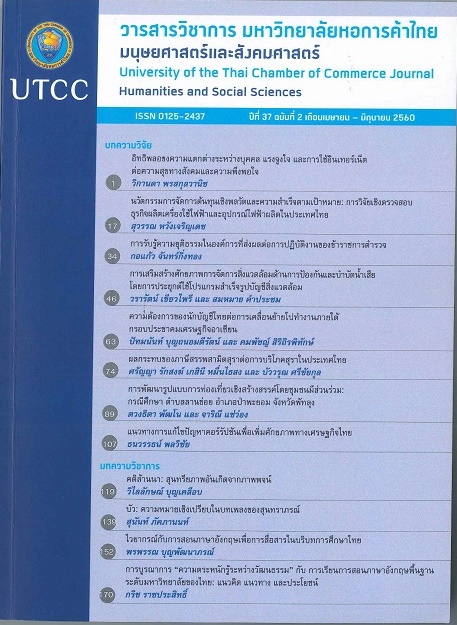Resolutions to Corruption Problems for Improving Thailand’s Economic Potentials
Main Article Content
Abstract
The aims of this study are: a) to explore both private and government sectors’ opinions and understanding about the changing situations and conditions of corruption problem and their adverse impacts on social and economic conditions in Thailand; b) to find solutions to corruption problems in order to increase the economic potentials as evidenced by other countries; and c) to propose solutions to corruption problems in order to increase Thailand’s economic potentials. The study makes use of both qualitative and quantitative research from documents and interviews. The attitudes of business people and civil servants towards corruption in Thailand
show their concerns about the problem. With regard to the impact of corruption on business operations, the majority responded that their operations are rather highly affected by corruption, increasing capital expenditures by 6 to 10 percent. According to the respondents, without corruption in the country, costs would decrease by 13.9 percent. As a result, sales would increase by 10.1 percent and profits by 9.8 percent. Overall, eliminating corruption will slightly increase the nation’s competitiveness. However, the respondents finally express that although the corruption problem is resolved, Thailand’s economic growth may remain the same.
Article Details
ลิขสิทธิ์ของบทความ
ผลงานที่ได้รับการตีพิมพ์ถือเป็นลิขสิทธิ์ของมหาวิทยาลัยหอการค้าไทย ห้ามมิให้นำเนื้อหา ทัศนะ หรือข้อคิดเห็นใด ๆ ของผลงานไปทำซ้ำ ดัดแปลง หรือเผยแพร่ ไม่ว่าทั้งหมดหรือบางส่วนโดยไม่ได้รับอนุญาตเป็นลายลักษณ์อักษรจากมหาวิทยาลัยหอการค้าไทยก่อน
References
Dridi, M. (2013). Corruption and economic growth: The transmission channels.Journal of Business Studies Quarterly ,4(4), 121-152.
Mahakun, V. (2007). Anti-Corruption policies and strategies to prevent, according to the new constitution.Bangkok, Thailand: Office of the National Anti- Corruption Commission. (in Thai).
Organic Act on the Prevention of Corruption B.E. 2542.(in Thai).
Organic Act on the Prevention of Corruption B.E. 2542 as Amended by B.E. 2550. (in Thai)
Organic Act on the Prevention of Corruption B.E.2542, No. 2, B.E. 2554. (in Thai)
Phongphaew, P. (2000) Thailand’s corruption index: creating and verifying reliability. Bangkok, Thailand:Office of the National Anti-Corruption Commission. (In Thai).
Phonvichai, T.(2013). The corruption and reduction through integrity assessment of government agencies: A case study of South Korea. University of the Thai
Chamber of Commerce Journal, 33 (4) , 103-116. (in Thai).
Rathamarit, U (2001). To tackle corruption in the political system and the government of Thailand: The Secretariat of the House of Representatives.(in Thai).
Royal Institute.(2003). Royal Institute Dictionary, B.E. 2542. Bangkok, Thailand: Author.(in Thai).
Tangsupvattana, A., &Poocharoen, O. (2010) . Guidelines for the application of international anti-corruption measures in Thailand: Faculty of Political Science, Chulalongkorn University.(in Thai).
Thailand. Office of the National Anti-Corruption Commission. (2008).The National Strategy on Anti-Corruption. Bangkok, Thailand: Author.( in Thai).
United States Agency for International Development. (2005).Tools for assessing corruption & integrity in Institutions: a Handbook.Retrieved from www.irispojects.umd.edu/antucorruption
University of the Thai Chamber of Commerce,Center for Economic and Business Forecasting. (2013). Thailand corruption situation index.Retrieved Maech 17 ,2016 from https://cebf.utcc.ac.th./Upload/index_file/file_th_76d16y2014.pdf (in Thai).


